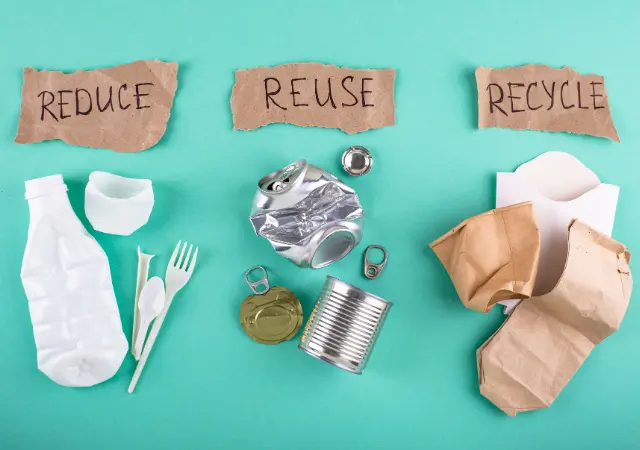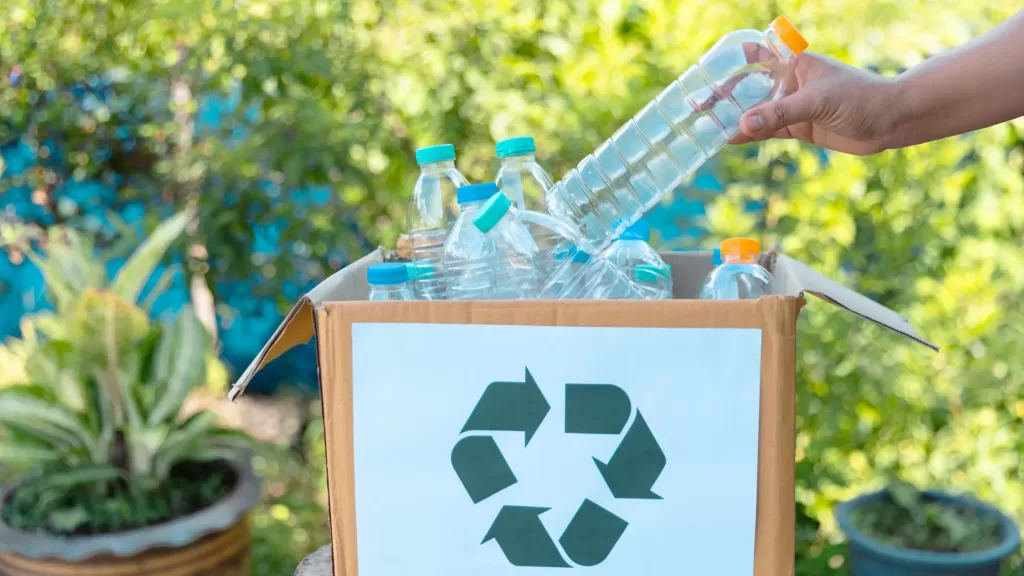Each year, the world generates over 300 million tons of plastic waste, but only a small fraction of it—around 9%—gets recycled. The rest ends up in landfills, rivers, or oceans, where it can take hundreds of years to decompose, harming wildlife and ecosystems. This massive imbalance between plastic production and recycling underscores the urgent need for effective plastic waste management. In response, governments have introduced measures like the Plastic Waste Management Rules 2016 and the Plastic Waste Management Rules 2022 to address the growing crisis. These rules, combined with the core principles of reduce, reuse, and recycle, offer a roadmap to mitigate the impact of plastic pollution and move toward a more sustainable future.
The Principles of Reduce, Reuse, Recycle in Plastic Waste Management

Plastic waste management begins with a simple but powerful approach: the 3Rs—Reduce, Reuse, and Recycle. These principles form the backbone of sustainable waste management practices, and when applied correctly, they can significantly reduce the environmental impact of plastic waste.
1. Reduce: Minimizing Plastic Consumption
The first step in managing plastic waste is to reduce our dependence on plastic. This involves cutting down on unnecessary plastic consumption and choosing alternatives when possible. For instance:
- Opt for reusable bags instead of single-use plastic bags.
- Choose bottles or containers made from glass, metal, or other sustainable materials rather than plastic bottles.
- Minimize packaging by buying products in bulk or from companies that offer eco-friendly products solutions.
By actively choosing to reduce our plastic usage, we can decrease the amount of waste that ends up in landfills or the ocean. This is the most effective way to address the root cause of plastic pollution.
2. Reuse: Giving Plastic a Second Life
Once plastic products have been used, the next step is to reuse them rather than disposing of them immediately. Many plastic items can be repurposed for different uses, reducing the need for new plastic products. For example:
- Glass jars, once emptied, can be used as storage containers.
- Plastic bottles can be transformed into planters or DIY projects.
- Plastic containers can be reused to store food or household items.
By encouraging the reuse of plastic products, we not only reduce the demand for new plastics but also extend the life of the materials we already have.
3. Recycle: Turning Plastic into a Resource
The recycling of plastic is another critical component of effective plastic waste management. Recycling involves breaking down used plastic products and turning them into raw materials for the production of new products. Some common examples of recyclable plastics include:
- PET (Polyethylene Terephthalate): Commonly found in water and soda bottles.
- HDPE (High-Density Polyethylene): Found in milk jugs, detergent bottles, and some plastic bags.
- LDPE (Low-Density Polyethylene): Found in grocery bags and certain food wraps.
However, not all plastics are recyclable, and contamination can make recycling less effective. That’s why it’s essential to properly separate recyclable plastics from other waste materials and clean them before disposal.
Plastic Waste Management Rules: A Legal Framework for Action
Governments around the world have recognized the urgency of plastic waste management and have put in place regulations to help address this issue. Two of the most important regulations in India are the Plastic Waste Management Rules 2016 and the Plastic Waste Management Rules 2022. These rules outline the responsibilities of manufacturers, retailers, and citizens in managing plastic waste.
Plastic Waste Management Rules 2016
The Plastic Waste Management Rules 2016 were introduced by the Indian government to provide a clear framework for managing plastic waste. These rules were aimed at reducing the generation of plastic waste, promoting recycling, and ensuring that plastic waste was properly disposed of. Key provisions of these rules include:
- Extended Producer Responsibility (EPR): Producers of plastic products were made responsible for the collection and recycling of plastic waste generated by their products.
- Ban on Single-Use Plastics: The rules discouraged the use of single-use plastics, such as plastic bags, straws, and cutlery.
- Plastic Waste Collection and Recycling: Local bodies were required to establish systems for plastic waste collection and recycling.
While the 2016 rules laid the groundwork for plastic waste management, there was a growing need for more stringent regulations to address the escalating plastic pollution problem.
Plastic Waste Management Rules 2022
In 2022, the Indian government introduced the Plastic Waste Management Rules 2022, an updated and more comprehensive version of the earlier rules. These new regulations build on the 2016 framework and focus on tackling emerging plastic waste challenges. Some of the key provisions include:
- Ban on Specific Single-Use Plastics: The 2022 rules introduced a more extensive ban on single-use plastic products, including plastic cutlery, plates, and balloons.
- Plastic Waste Management by Producers: The rules impose stricter responsibilities on producers, mandating them to reduce plastic packaging and adopt sustainable alternatives.
- Plastic Waste Collection and Recycling Targets: The rules set clear targets for the collection and recycling of plastic waste, with a goal to ensure that plastic waste is properly segregated and processed.
- Plastic Packaging Regulations: The rules introduced regulations for the use of recycled content in plastic packaging, urging producers to incorporate post-consumer recycled plastic in their products.
Why Plastic Waste Management Matters
Effective plastic waste management is critical for reducing pollution, protecting wildlife, and preserving natural resources. Every year, millions of tons of plastic waste end up in landfills, rivers, and oceans, where they can take hundreds of years to decompose. During this time, plastic waste leaches harmful chemicals into the environment and poses a threat to both terrestrial and marine life.
By adopting the principles of reduce, reuse, and recycle, and by adhering to regulatory frameworks like the Plastic Waste Management Rules 2022 and Plastic Waste Management Rule 2016, we can take significant strides toward a cleaner, healthier planet.
How You Can Contribute to Plastic Management
As individuals, we all have a role to play in plastic waste management. Here are some simple yet impactful steps you can take:
- Say no to single-use plastics: Carry your own reusable bags, water bottles, and containers.
- Support recycling programs: Separate your plastic waste and ensure it’s sent to recycling centers.
- Choose products with minimal plastic packaging: Look for items with eco-friendly or biodegradable packaging.
- Spread awareness: Encourage others to follow sustainable practices and reduce plastic waste.
Moving Towards Sustainable Plastic Waste Management
Plastic waste management is crucial for protecting the environment and ensuring a sustainable future. By following the principles of reduce, reuse, and recycle, we can significantly minimize plastic pollution and reduce our environmental footprint. The Plastic Waste Management Rules 2016 and 2022 play a vital role in enforcing regulations that promote better plastic waste disposal and recycling practices. As individuals, businesses, and governments work together to implement these guidelines and principles, we can create a cleaner, healthier planet for future generations. Sustainable plastic waste management is not just a regulatory need—it’s a shared responsibility.
Let’s be part of the solution and take meaningful steps toward reducing plastic waste in our communities and beyond!
Also Read:- What are the benefits of Bioplastics
